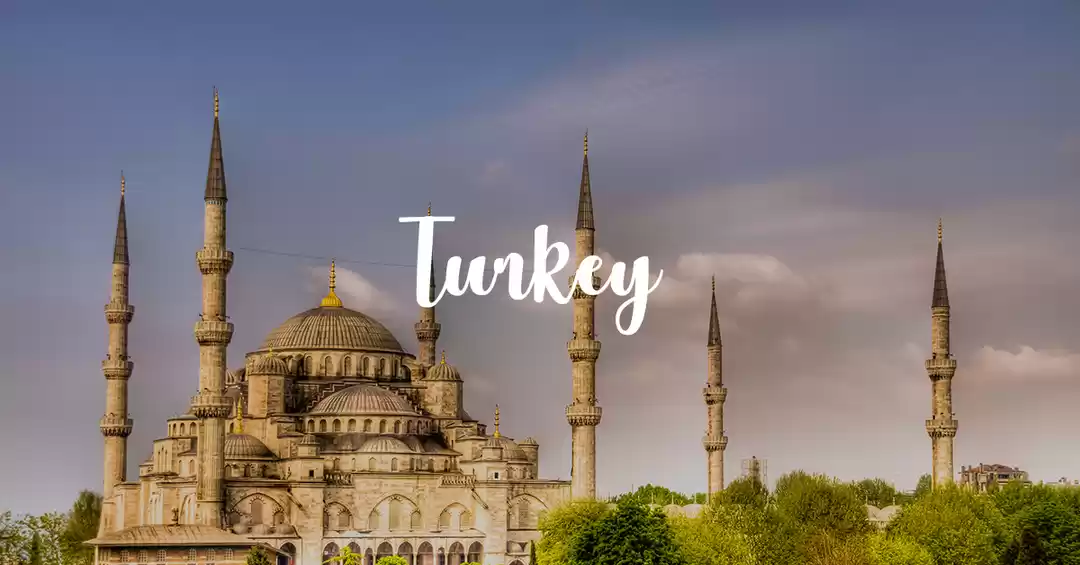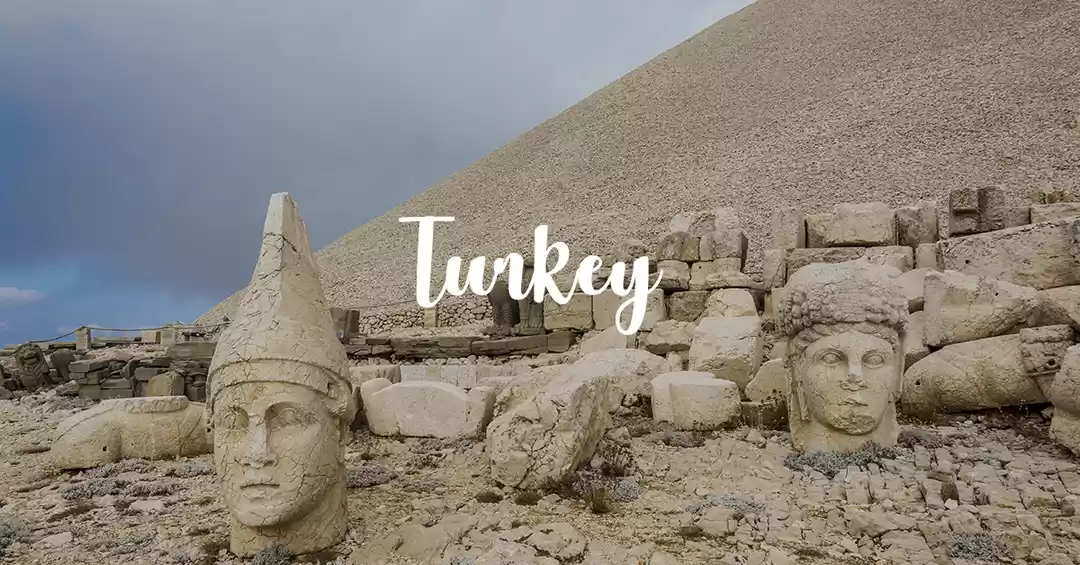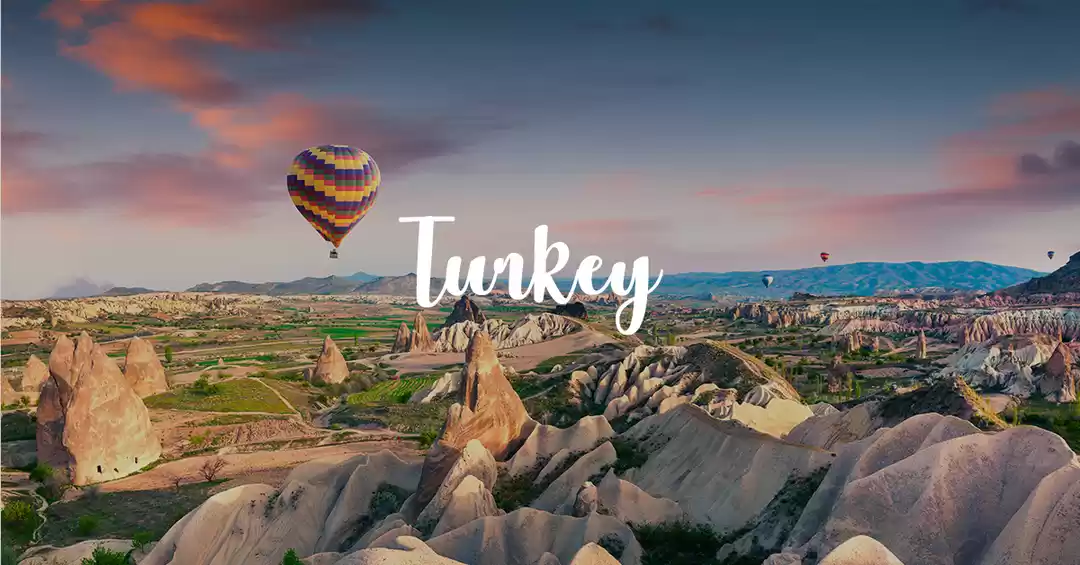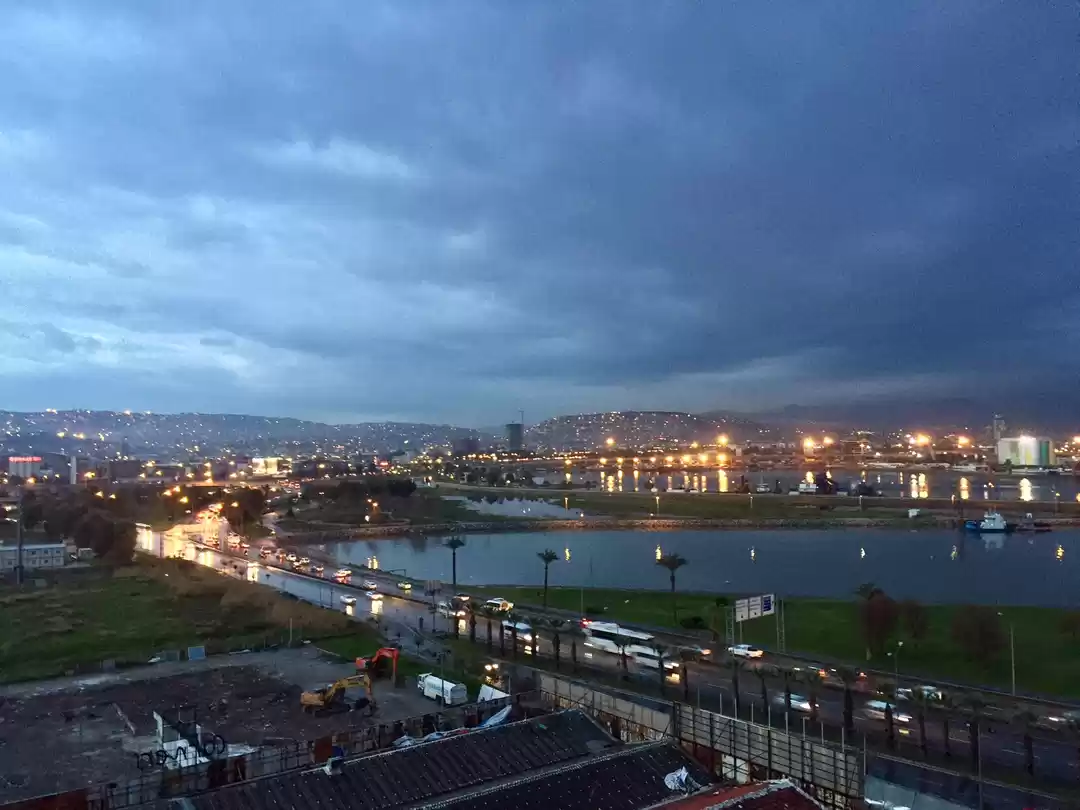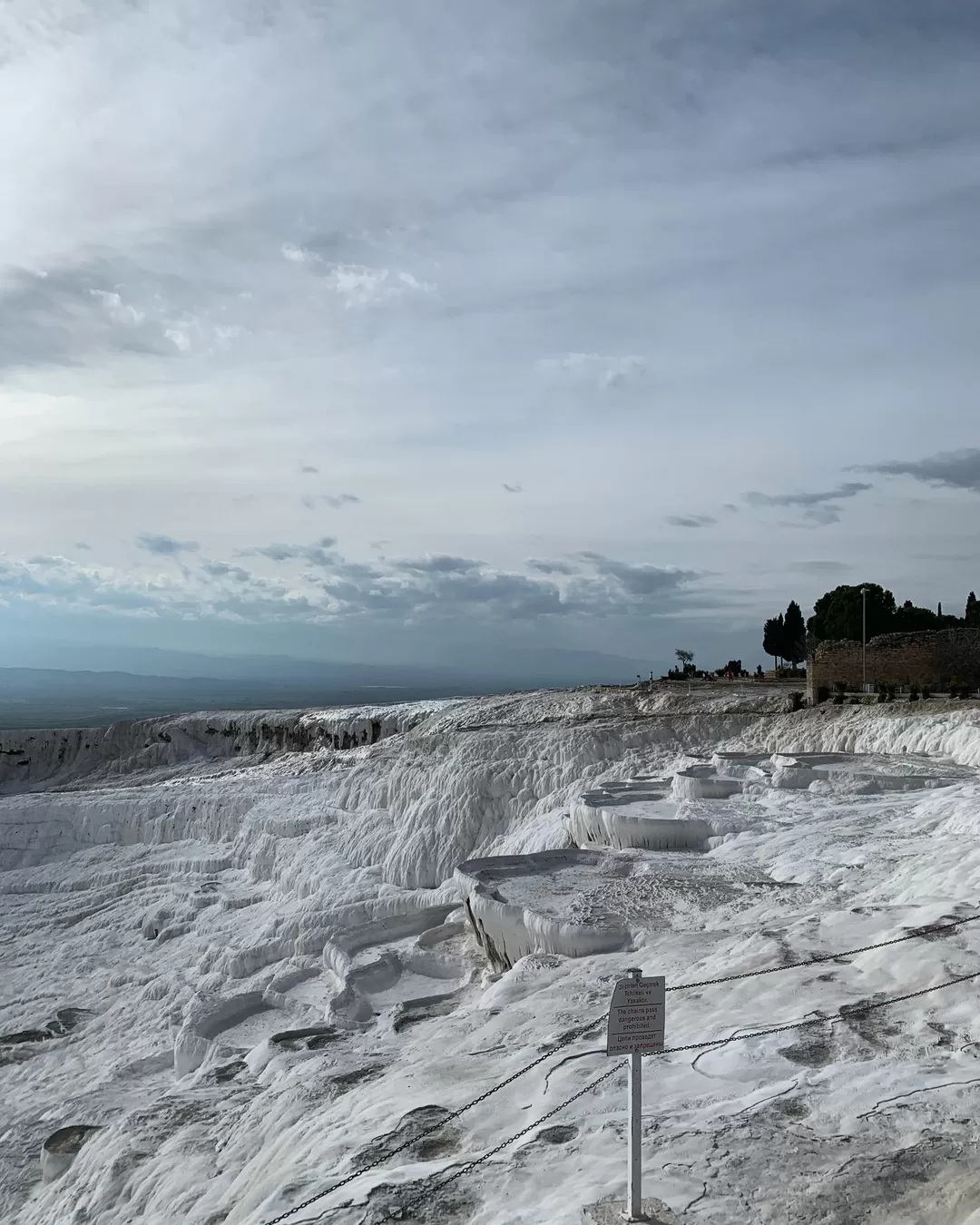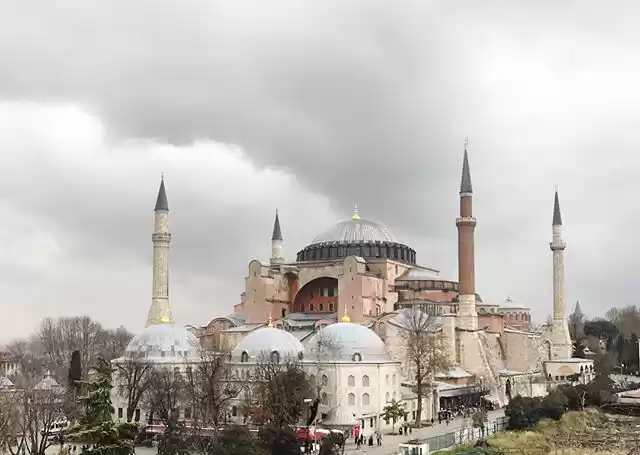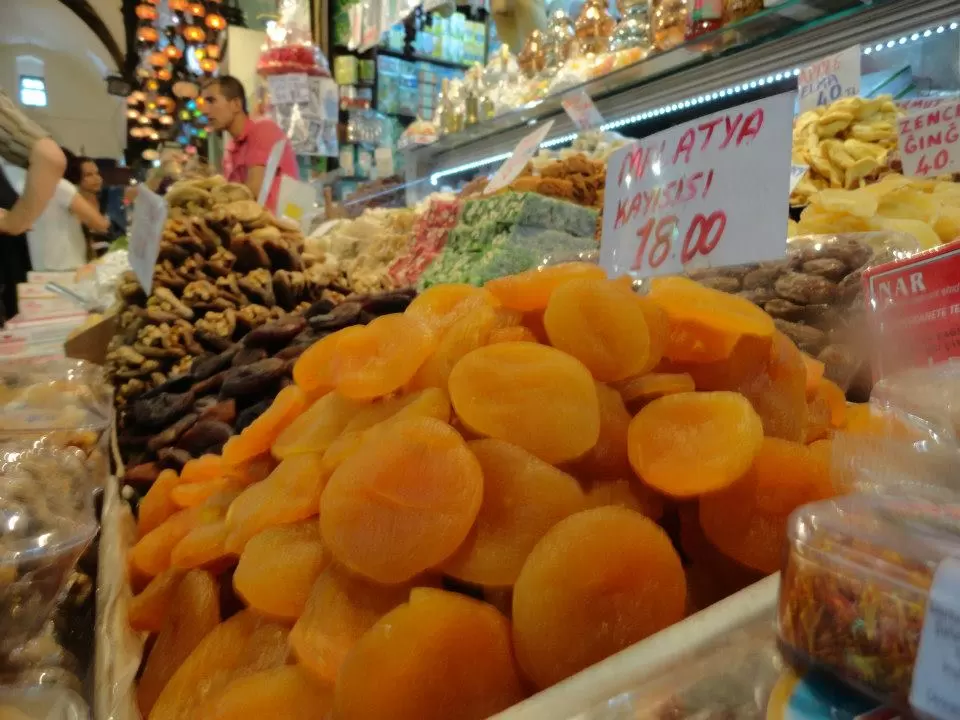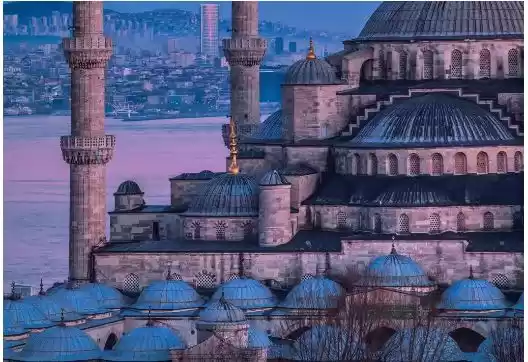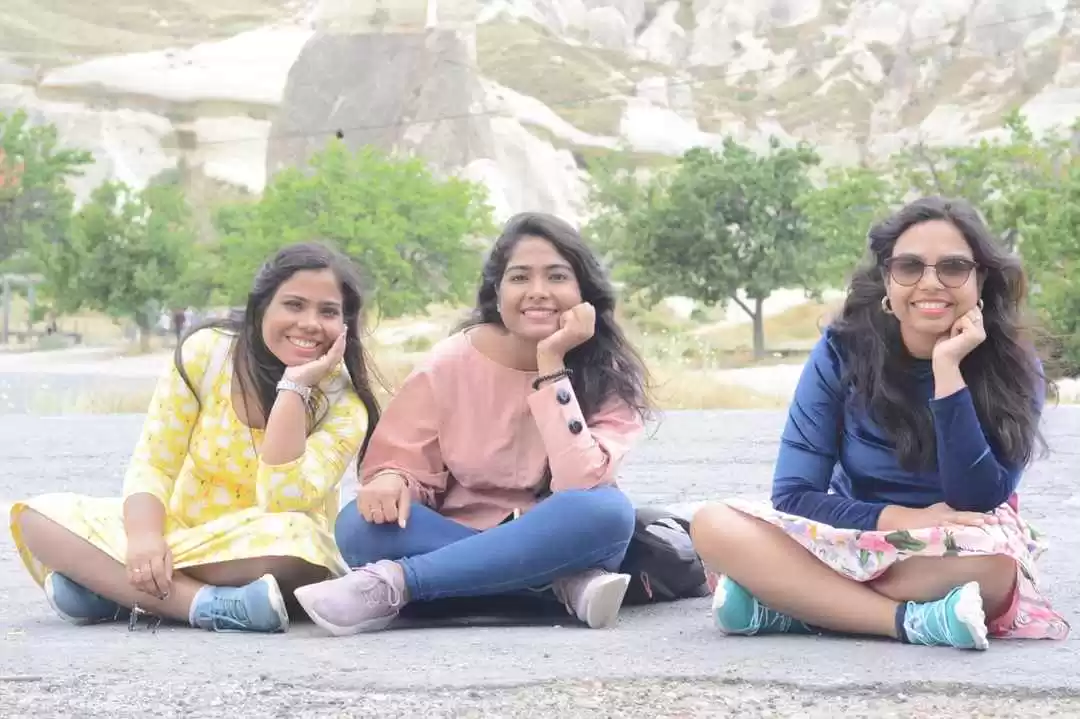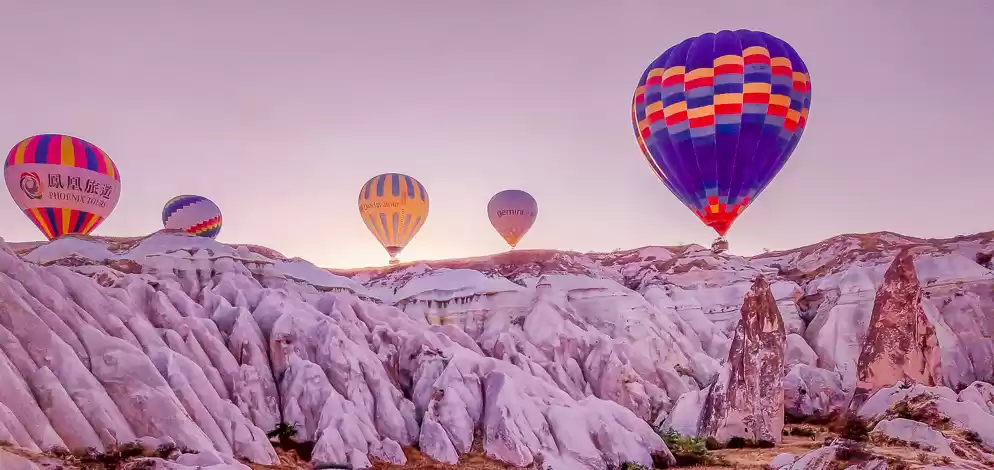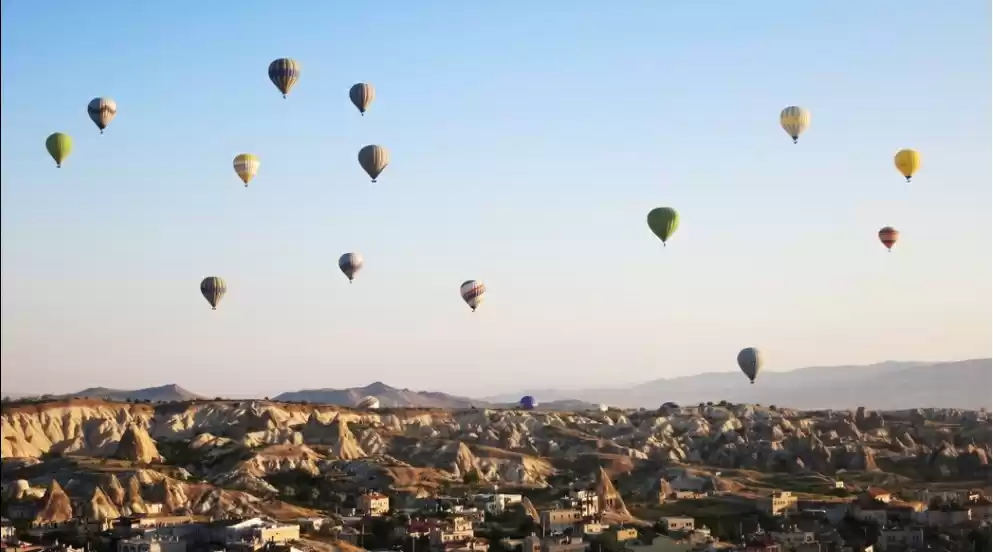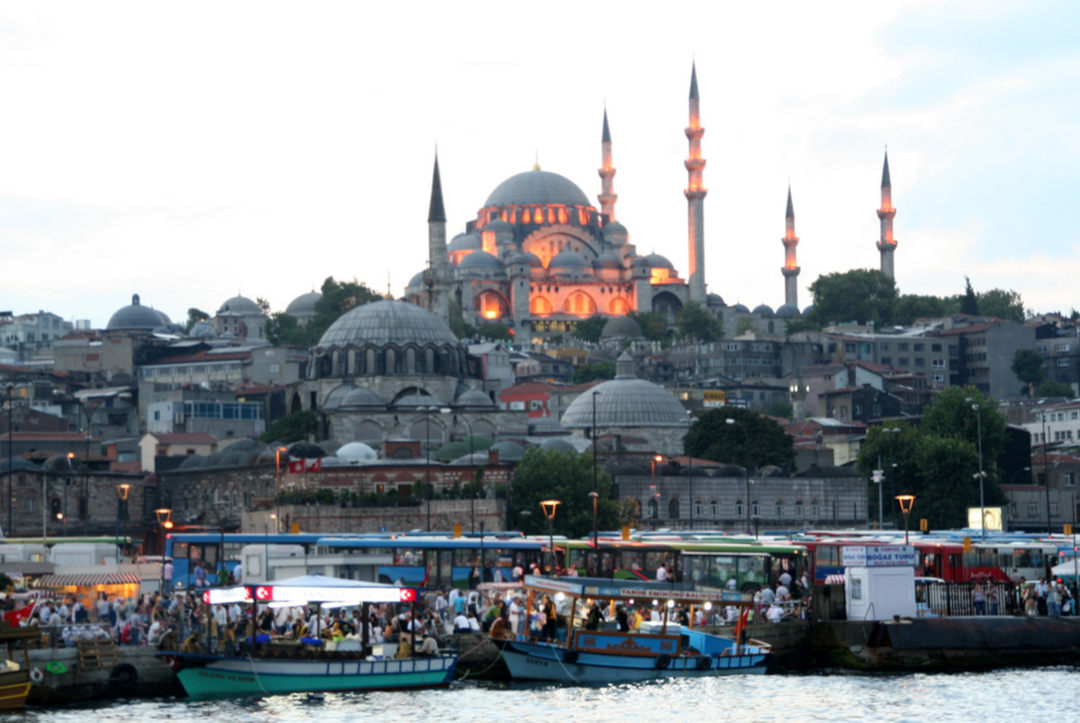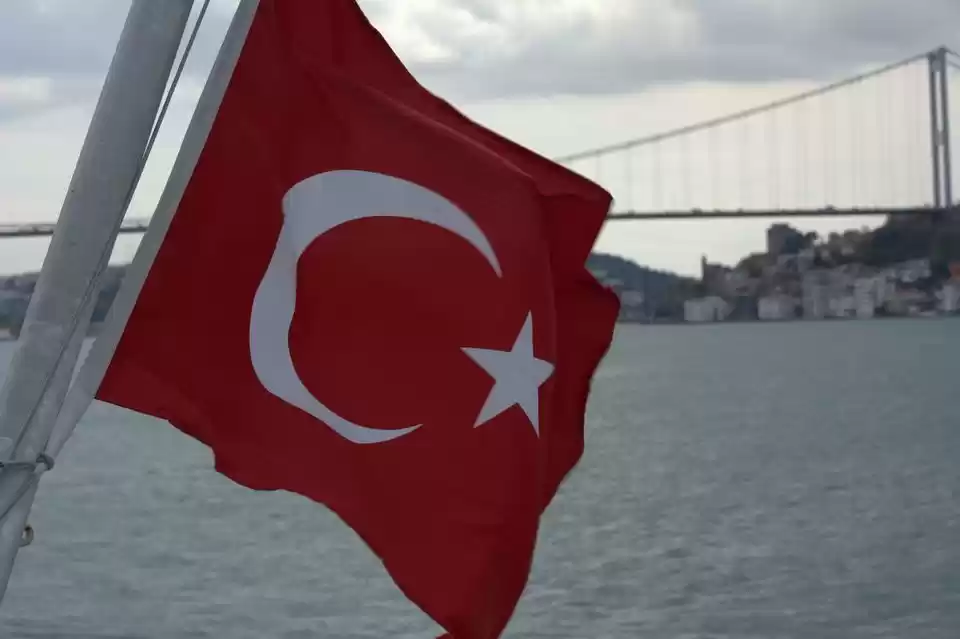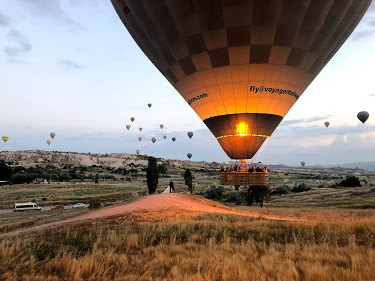
Whether it is the secretly illustrated book for Sultan Murad of 16th century Ottoman empire which Pamuk's miniaturists are killing over or the 30th June LGBTQ parades in Erdogan's capital, Turkey's flirtations with changing mores that often conflict with religion or tradition have continued to enrich a society that is both old and new.
After many years of gestation, the idea of an Anatolian sojourn finally fructified in the summer of 2019. A recently launched direct flight between New Delhi and Istanbul made it evermore realizable and a birthday dinner get-together gave shape to a 10 day long (actually short for a country that is a museum in its entirety) trip with friends to Turkiye.
Although our original direct 6 hr flight turned into a hopping 10 hr ordeal, the company of good friends and red wine in paper cups made it worthwhile. We arrived at the new Istanbul airport on the Black sea which is an understatement for gigantic. Posh terminals, tons of shops and never-ending walkways is a more adequate description in my view. I did some quick online shopping while we waited for our connection to Kayseri. An hour and ten minutes later, we were hailing cabs and collecting our bags at the largest airport of the central Anatolian region, very much in the geographical heart of Turkey. A long day of flying and checking in and out of bags came to a close a little past midnight in Ibis, Kayseri which is less than 5 km from the airport. A fine 3 star hotel with great value for transit tourists like ourselves.
Next morning, we were picked up by our transfer service in a traveller van to bring us to the first proper pitstop on our itinerary. Welcome to Goreme, Cappadocia! A small village/ town in the middle of strange rock formations, Goreme has turned into a tourist hub, thanks to those enormous hot air balloons you see on postcards. Other than the rock formations themselves, the balloon business is the only reason that brings throngs of tourists from around the world to this small town of a little over 2000 residents. The entire municipality is littered with big and small cave hotels which are mostly family run businesses. These so called cave hotels are usually extensions of the original caves left behind all over this region by Christian minorities of a different era who used them as shelters during times of war, invasion or persecution by the new Islamic rulers of Turkey. Our first lesson in the grim history of religious persecution that this country has seen so much of. Today, there are tours designed around the different land formations and underground cave cities, named after colors and led by a state certified tour guide who takes you through glimpses of this sordid past with humor and subtle demands for tips.
Emerging from Derinkuyu, the deepest underground cave city in the region, you will notice an old derelict church in the middle of the village plaza that nobody has bothered to enter in hundreds of years perhaps. The windows are boarded up and the gong is missing it's bell. Surrounded by overgrown grass and bush this little stone structure serves as a reminder of a time gone by as well as the futility of a place of worship. After all, who needs a Christian altar in Derinkuyu today. The gods of Derinkuyu rest elsewhere.
Although most people will miss this oddity in the plaza, what they will remember for years is the ingenuity of the people who built settlements as large and deep as Derinkuyu, colonies that could house upto 20,000 inhabitants at a time, living one above another in as many as 7 stories with passageways for air and water running through. What will stay with many are the claustrophobic stairways connecting the different levels, the cross shaped prayer room at the bottom or the underground cemetary.
Hiking along the valleys and exploring as many cave cities as the tour allowed we came to a lunch by a stream which in all likelihood ran into the Kizmilrak, the longest river in Turkey. As anticipated the tour inclusive lunch was simple and limited while many extras could be purchased on top. We settled for freshly squeezed orange juice to wash down our Turkish fish/ chicken main, lentil soup with side of bread and a largely lettuce based salad. It wasn't a bad setting at all except that one of the boys in the kitchen tried to get a little too friendly with one of the girls but I believe it was quite harmless and we all got a hearty laugh out of it.
The next day was the big balloon flight. Woken up in the wee hours, we were picked up from our hotel Kayatas, a small 8 room guest house in Goreme and transported in tour vans to the open valley from where we would be taking off later at sunrise. As they prepped the balloons, hundreds of tourists like ourselves waited, wondering which one would they be riding in. The ride itself is about 60 to 90 minutes depending on what you pay but the transfers and the prepping take up another 2-3 hours easily.
I was a little nervous in the beginning but on realizing how reassuringly stable the basket actually was, I felt at ease and slowly the entire peninsular landscape opened up before us. The sun was just coming up on the horizon and the mound like hills below kept changing colors from white to pink, pink to red and red to ochre. Once you are up in the sky, It's almost like a contest between the hundreds of balloons as to who can rise the highest. The gas furnace keeps blasting hot air into the balloon with an intermittent whooshing sound until you have risen to the highest point of your captain's choice and judgement and up there it is almost as still as it can be. You have left the sounds of the terrestrial world below you and the sky is dotted with colorful lit up balls all around. The roads and valleys now appear as long grey lines on a canvas which is a splatter of fields, rock and shrub. Instagram, anyone?.
I guess with friends time goes by quickly and between the selfies and groupies you don't realize before it's almost time to begin descending. With much effort and practice, the ground crew of each balloon tracks the expected landing site which depends on wind direction and speed of descent. A constant relay of coordinates between the captain and the ground crew establishes the exact spot where the captain intends to land and the ground crew appears at the right time almost magically. 4 to 6 men tug and pull on the ropes hanging from the basket once it's a few metres above ground, bringing it into the exact landing position just above the flat trailer which will carry the basket back to the yard. It's nearly a gladiator match and the crew gets rewarded with an unrestrained applause. This is followed by a customary champagne toast and photo-op, not to forget the little souvenir certificates.


For 160 EUR/pax, this came out to be the second most expensive flight of the trip but now I'm the guy who has been on a hot air balloon and I think that's something in itself. We spent the rest of our day catching up on sleep and lazing around town, eager to try the much talked about pottery kebab, a local specialty. Someone recommended a fancy place in town and we got ourselves a reservation after taking much attitude from the manager. I can say as an Indian, not only was the food disappointing, it was just not worth the pain. My twopence- give it a pass.
We spent the next and final day in the region exploring by ourselves. After renting a self drive tourist van big enough for 8 we set out on the popular red tour- visiting the quaint and quiet town of Avanos on the meandering Kizmilrak with its riverside parks and old winding streets where we spent hours just languishing in the June heat, ruminating over sex, fidelity and commitment (we tend to get philosophical when we have nothing better to do) and ended the day on a high note, literally, at the highest point of Cappadocia- the Uchisar castle.
Wrapping it up in Goreme later that day, we took the overnight bus which brought us to Pamukkale. Closer to the south-western coast of Turkey, Pamukkale is a thermal spa town known for its Calcium travertines and the ruins of Hierapolis, a Greek settlement that was later occupied by Roman empire stretching into Asia minor. Most of the ruins seen today are of Roman times when the necropolis attained its golden period. It is believed that Cleopatra and Anthony frequented the hot springs here among many other luminaries of the Roman period. There is an antique thermal pool named after the Egyptian queen which offers the unique experience of bathing alongside historical royalty for an additional fee but given the scorching heat of late June and the swarms of tourists, we chose to give it a pass. By far, the most remarkable structure is the amphitheater believed to be built after the great earthquake of 60 AD. It is the best preserved part of the site and makes for some great pictures. My advice for Pamukkale is to start early, before the crowds converge and avoid the time-wasting guided tours. It is best to approach the closest gate and find yourself a guide (if needed) for Hierapolis near the entrance.
Next morning, we got on a Turkish railway train from Denizli which is the closest big town with a train station. Any means of transport coming into or going out of Pamukkale typically goes through here. A regular service, 4 times a day runs between Denizli and Selcuk, our next point of interest. An early morning Dolrum transfer to the railway station and a breathless sprint to the train platform later we were on a clean and comfortable albeit not adequately air-conditioned suburban train to Selcuk. Selcuk's claim to fame is the Greek (later Roman) megapolis of Ephesus. Of all the excavation sites I have seen thus far, Ephesus is not only the largest but also the best preserved. I don't think that a few pictures or words can do justice to this open air museum and it's worthy of a whole piece in itself but like our excursion on that hot June Mediterranean afternoon let us stick to the highlights.
Our guide whom we hired at the entrance was state certified and clearly knew his stuff. The heat didn't seem to bother this elderly gentleman who took time to take us through the different eras of the settlement, Greek, Roman and Byzantine. His commentary helped us to visualize how the Aegean sea once touched the very harbor of Ephesus, just outside the enormous amphitheater before silting up and denying the once prosperous residents of this city their trade and livelihoods.
His detailed description of the Roman houses, both rich and poor, the ingenious sewage system, the hospital, the library as well as the city brothel as if brought a distant past alive before our eyes. If only I had asked for his business card, I could have left a great recommendation here. Selcuk has many other sites that warrant more time including the Selcuk museum which has many artifacts from the Ephesus and other excavation sites around. But we didn't have much time left and decided to move on to Izmir airport where we picked up our rental cars to drive out to the Cesme peninsula on the Aegean.
An old coastal Greek town on the Cesme peninsula, Alacati is a popular beach resort lined with boutique hotels and trendy coffee shops. The trendiest of them are in the heart of town spreading out from the old 19th century windmills overlooking a hill. Following the Greko-Turkish war, most Greeks who were the original inhabitants of this peninsula either fled or were emigrated under the exchange of Greek and Turk populations displaced due to the war. Turk Muslims fleeing the Balkans and Greek islands were settled in the abandoned stone houses of the Greeks. Ironically, today the resettled Muslim population can be seen trying very hard to retain the Greek heritage of Alacati, almost overdoing it to invite both domestic and international tourists looking for surf, sand and sun.
Other attractions in Alacati include the beach, the bay and a yacht marina. You can enjoy a nice walk along the marina and follow it up with a fine dinner overlooking the yachts; don't expect great food though. Most restaurants here are about the view and not so much about the food in my opinion but if you come across a great place with good food, please enlighten me.
I think by now we could sense a certain amount of exertion after almost 5 days of travel and Alacati helped us take care of just that. Lazy afternoons in the pool and sundowners on the patio was the order of the day with short excursions in between of course. But personally for me, the high point was when the housekeeping lady (who I think was a Croat) at the hotel, not knowing any English or Hindi, managing mostly with sign language and a few broken words, told us how she loved Raj Kapoor and we all began to hum 'mera joota hai japani'. It is just incredible how Bollywood can connect the most unconnected people.
Refreshed and re-energized we arrived in Istanbul, the city that straddles two continents. Our final and most important pit-stop, Istanbul was everything I had imagined it to be and more. For years, I had fancied coming face to face with this melting pot of civilization, where East meets the West and I wasn't going to let exertion or homesickness get in the way. Over two and half days, we explored as many points of interest as we possibly could. And yes, some of these we rushed but gave enough time to those which were deserving. Much like Bombay, Istanbul has that typical vibe of a harbour city and I could sense that familiarity from my childhood. The best way to explore any seaside city is to observe its skyline from the water and that was the first thing we did- an evening cruise on the Bosphorous.
A typical sunset cruise is a great way to see the skyline both in daylight as well as when it lights up after dark. The PA system on board our boat was rather inadequate and although we didn't quite know the buildings or bridges we were crossing, people watching was pretty fun and the cool sea breeze in my hair brought back many fond memories. The expanse of the city became clearer and clearer as the tour advanced along the Bosphorous and yet we knew there was a lot more beyond the last buildings we could see from the deck.



Beyond the cruise there are several historical buildings and streets from different eras- Roman, Byzantine, Ottoman, as well as modern. It's a crazy mix of different styles and times. As you cross the Bosphorous on the Ataturk bridge, approaching from Taksim, the Valens aqueduct from the Roman times can still be seen standing bang in the middle of this wide and busy street in Fatih. Built in the 4th century, it was the primary water supply system to the great city of Constantinople and remained in use during Byzantine and Ottoman rule. Today, the last prominently surviving section is seen as an arch bridge across the Ataturk Bulvari street.
As you turn to the left just 200 m before the aqueduct itself, into the narrow lanes of Fatih you will see many old houses of the Ottoman quarters leading to Suleymaniye, the imperial mosque commisioned by Suleyman, the magnificent in mid-16th century. It is a most elaborate specimen of Ottoman architecture from when it was at it's peak and though not as big as the Hagia Sofia, standing in its courtyard you can't help but feel the magnificence Suleyman must have envisioned for his memorial. His mausoleum can be found in the same complex along with a school of Istanbul University (formerly a madrasa), a women's hospital (formerly darussifa) and many touristic restaurants (formerly Ottoman soup kitchen). On your way to the mosque you might notice some old derelict timber houses from Ottoman times and wonder if they were last occupied by the learned elite of 16th century Istanbul or the wealthy immigrants fleeing persecution in other parts of Ottoman empire in the 18th.

If you have the appetite for some walking continue navigating through the narrow but clean lanes of Fatih like we did for another 20 minutes in the direction of the Marmara sea and you will find yourself upon the greatest symbol of the Byzantine empire, a symbol that has stood the test of times and continues to represent Turkey from postcards to geography text books alike.
I strongly recommend an audio guide if you are travelling alone or as a couple. The place is brimming with more history than you can grasp in under 2 hours. And if you are a nerd like myself, read up a little before you go in. Start early as the queues can get long during the day and most importantly, come here before you go to the Blue mosque which is just 400m across. You see, both the Blue mosque and Suleymaniye are active mosques where Istanbullus offer their daily prayers and there is no entrance, meaning no queues. Also, parts or whole of the mosques are closed to visitors during the azan intervals and you could get stuck in the courtyard if you arrive at the wrong hour.





Built in 537 AD, the Hagia Sophia remained the largest cathedral in the world for nearly a 1000 years until the Seville cathedral and then served as the primary imperial mosque of the Ottoman empire for nearly 200 years until the construction of the nearby Sultan Ahmet or Blue mosque. The monument has stood the test of time and been restored several times. Ataturk converted it into the first museum of the republic of Turkey and that decision has become a target of criticism in recent years under an Islamicizing Erdogan. Nevertheless, it continues to be one of the most visited sites in all of Turkey and you shouldn't miss it for any reason.
Between all the history and art, when you find yourself missing the modern and contemporary, head to a trendy bar near Taksim for some expensive cocktails, although you might not find a place to sit but who cares when you have good company. Or go on a shopping spree on the most colorful Istiklal avenue which is bustling with activity 24X7, literally. The stores are open all night long and some deals you can find here will make e-com shopping look expensive. There are places to eat all kinds of cuisines, street food stalls and sweet marts specializing in the mouth-watering baklava. Street musicians and performers will keep you entertained and above all there is the simple joy of people watching.

While you are in the city, do take out some time for a traditional Ottoman bath also popularly known as the Turkish bath or Hamam. A traditional community bathhouse called Hamami was brought to Turkey by the Ottomans and became a part of ordinary public life over the centuries. These days the oldest royal or public baths cater to luxury tourists who don't mind throwing money for an elaborate spa involving thorough cleansing, massage and different kinds of therapy. However, there are a few old gems that may not have the fancy buildings that you will find in the Fatih district but bring back a time gone by for their patrons just the same. We picked Cinili hamami in Uskudar district where for 80 lira/pax you can experience an authentic Turkish hamam session ranging from 30 to 50 minutes. It is located in a nondescript residential neighborhood which can be easily reached by public transport. We boarded the underwater Marmaray train from Fatih to Uskudar and then a 5 min bus ride later we were on the street leading to the Hamami. With a few English phrases both Sonam and I managed to admit ourselves to our respective sections (male and female are separated, naturally) and 10 min later I was being escorted inside the bathing section. A central dome with tiny windows for light and a large hot hexagonal marble platform under it is the heart of the bathhouse. A masseur pours buckets of lukewarm water over you before he escorts you to the central platform where he will then scrub you, exfoliate your back, arms and legs while giving you a moderately rough massage. He uses a special muslin to create mountains of foam over your body which at times can cover all of it. I think this is more of a gimmick to fascinate other spa goers waiting for their turn so they might pick him. After all, the masseurs do expect a customary tip from their patrons at the end of their bath. The ritual comes to an end with excessive volumes of cold water running down your head to toes and a nice snugly wrap in hamami provided towels. When you are ready to leave, the deal is sealed with a complimentary cup of Turkish cai (tea).
There's tons of things to see and do in Istanbul and I can assure you 3 days are not enough, not even close. I know that I'm going back again, whenever the opportunity presents itself again. You can't go 2 miles without crossing a museum, mosque or other historical relic and each one more beautiful than the last. On this trip I could barely glance through the preface of this ornate and exquisite book. The tome of history and culture that it truly is will surely take many more.

Some useful tips if you're planning a trip to Turkey
Public transport in Istanbul is great and if you are traveling alone or as a couple, do make use of it. Buses, trams, underwater subway, funicular and ferries, everything is covered under one Istanbul card which can be bought at many different transport points in the city and you can top it up easily at the same machines.
If you are traveling in a group of 3 or more, look for taxis as they will come out to be the same price more or less. Taxis are plentiful but hard to find (ironical, isn't it). Use radio taxi apps like Uber or Bitaxi in Istanbul.
In smaller towns, there are local buses called dolrums. Don't hesitate to check for one if you are traveling a short city distance.
Book your hot air balloon flight well in advance and whether you pick 60 or 90 min should not really matter. Pricing however, varies.
Bring lots of sunblock and umbrellas if you intend to venture out during the day from June to August.
Overnight buses are comfortable and a worthwhile way to travel. Bus journey can also be booked at the station on the day of travel but if you prefer booking in advance, try www.busbud.com
Suburban or intercity trains are clean and comfortable and never too crowded. Buy your tickets at the station on the same day except during public holidays maybe.
There are plenty of options for vegetarians, just ask for them.
Helios transfers in Cappadocia are a reliable and professional service. Contact them here: http://www.heliostransfer.com/en
Beach bars in Cesme do not open until after June, so if that's your thing, plan your time of visit accordingly.
If you have the time, include Ankara on your list.
You are welcome to read through my other adventures on https://hoboinkaps.wordpress.com/



















































